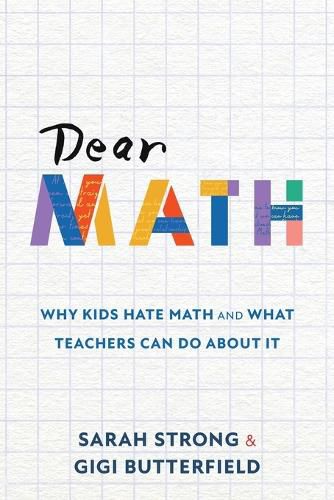Readings Newsletter
Become a Readings Member to make your shopping experience even easier.
Sign in or sign up for free!
You’re not far away from qualifying for FREE standard shipping within Australia
You’ve qualified for FREE standard shipping within Australia
The cart is loading…






This title is printed to order. This book may have been self-published. If so, we cannot guarantee the quality of the content. In the main most books will have gone through the editing process however some may not. We therefore suggest that you be aware of this before ordering this book. If in doubt check either the author or publisher’s details as we are unable to accept any returns unless they are faulty. Please contact us if you have any questions.
Do your kids hate math?
Many students fail to understand the value of math, and some grow to hate it. Want proof? Read genuine letters students wrote to math, compiled by the authors in this Dear Math book.
Discover the root of this problem.
15-year veteran math teacher, Sarah Strong, and her high school student, Gigi Butterfield, address concerns about negativity around teaching and learning math and why kids hate math (at least some of them).
Digging into the feelings math evoked in hundreds of middle and high school students-that math is unnecessary, oppressive, and intimidating-the authors explore ways to spin student expressions of problem-solving unworthiness into an antidote for their disdain for math.
Using Dear Math letters, as well as other teaching math tools in this book, you can help students build a healthy and whole relationship with their inner mathematician.
Learn how to use the most important skill of all-listening-to help students and teachers discover:
The empowerment of math The importance and usefulness of math How to help kids love math The beauty of mathematics in practice The journey from hatred of math, to appreciation of math and, in some cases, a lifelong relationship with math
What do letters to Math look like?
Read Dear Math today and uncover the feelings students are typically unwilling to share with teachers. And how to turn the negative into a positive.
$9.00 standard shipping within Australia
FREE standard shipping within Australia for orders over $100.00
Express & International shipping calculated at checkout
This title is printed to order. This book may have been self-published. If so, we cannot guarantee the quality of the content. In the main most books will have gone through the editing process however some may not. We therefore suggest that you be aware of this before ordering this book. If in doubt check either the author or publisher’s details as we are unable to accept any returns unless they are faulty. Please contact us if you have any questions.
Do your kids hate math?
Many students fail to understand the value of math, and some grow to hate it. Want proof? Read genuine letters students wrote to math, compiled by the authors in this Dear Math book.
Discover the root of this problem.
15-year veteran math teacher, Sarah Strong, and her high school student, Gigi Butterfield, address concerns about negativity around teaching and learning math and why kids hate math (at least some of them).
Digging into the feelings math evoked in hundreds of middle and high school students-that math is unnecessary, oppressive, and intimidating-the authors explore ways to spin student expressions of problem-solving unworthiness into an antidote for their disdain for math.
Using Dear Math letters, as well as other teaching math tools in this book, you can help students build a healthy and whole relationship with their inner mathematician.
Learn how to use the most important skill of all-listening-to help students and teachers discover:
The empowerment of math The importance and usefulness of math How to help kids love math The beauty of mathematics in practice The journey from hatred of math, to appreciation of math and, in some cases, a lifelong relationship with math
What do letters to Math look like?
Read Dear Math today and uncover the feelings students are typically unwilling to share with teachers. And how to turn the negative into a positive.